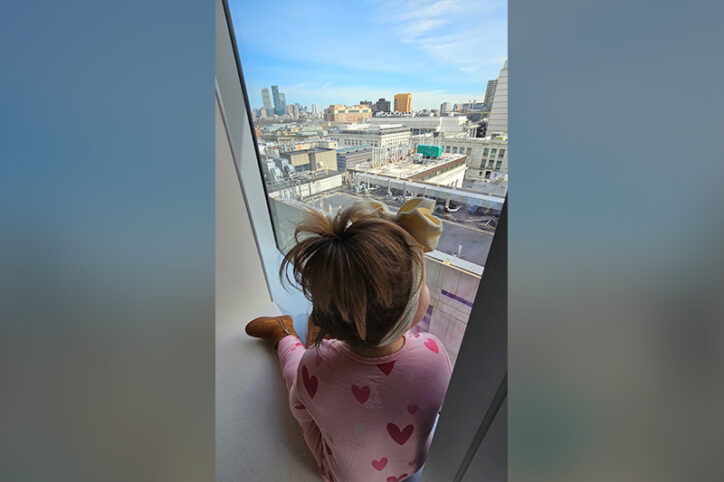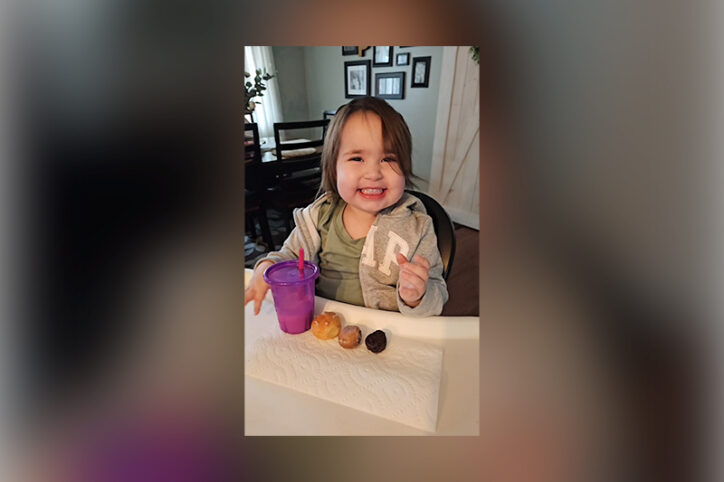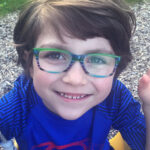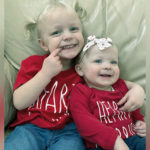From swallowing troubles to doughnuts: How vascular ring treatment helped Everly

By the time she was a year old, Everly Parisee was frequently wheezing. Then she had trouble swallowing foods. Her parents sought help from local pediatricians and specialists, who, in turn, couldn’t pinpoint a diagnosis.
It turns out Everly had a type of vascular ring — a rare congenital defect that can constrict critical parts of the respiratory and digestive systems and often isn’t detected until after birth. But it took more than a year to reach that diagnosis. In the meantime, her family kept trying to get to the bottom of her breathing and swallowing difficulties.
“I wasn’t sure what was wrong,” recalls Everly’s mom, Erin. “There were countless doctor visits, countless emergency room visits. We got different diagnoses. Nothing made sense and we just kept going back and forth.”
Looking for the right answers and relief

Allergy tests came back negative, but that didn’t surprise Erin because when her family took measures to reduce allergens at home, Everly still wheezed. To describe her asthma-like symptoms, doctors at one point thought Everly had reactive airway disease, which seemed like another hurdle. Heightening her family’s concerns even more, Everly’s oxygen level dipped to 70 percent one night.
It had also become evident that Everly was having trouble swallowing. She went from eating chicken nuggets and peanut butter and jelly sandwiches to consuming only pureed food. And even though Everly was old enough to speak, she didn’t talk often. Erin suspected Everly wanted to avoid discomfort.
With Everly’s health issues mounting, Erin wanted her to have a swallowing test. Bringing results from a battery of tests from other hospitals, including a CT scan that identified a possible cause, Erin met with the team at Boston Children’s Vascular Ring and Airway Program. They confirmed Everly had a left aortic arch with aberrant right subclavian artery. Even though it is not a fully formed ring, the program still identifies and treats it like a vascular ring if it is causing symptoms and significant compression to the esophagus and trachea. Everly had such compression and symptoms, so the team recommended corrective surgery.
Vascular rings aren’t always immediately diagnosed
A long journey to a vascular ring diagnosis isn’t uncommon. “Families are often told over and over that their child’s symptoms aren’t related to a vascular ring, or that they’ll grow out of what it’s believed to be,” says Lianne Cole, a co-coordinator of the Vascular Ring and Airway Program.
That’s because if a vascular ring isn’t spotted in the fetal stage by an echocardiogram or ultrasound, testing after birth usually focuses on finding more common respiratory and esophageal conditions that also have those symptoms. A vascular ring is seldom suspected because it is rarer, says Jennifer Brown, the program’s other coordinator. That’s why it’s important for families who can’t find answers about symptoms to seek an experienced team that can diagnose and treat vascular rings.
A quick recovery, followed by carefree days
After a lifetime of symptoms, Everly had a “light-switch recovery” from surgery in 2023, Erin says. Her surgeons, Dr. Christopher Baird and Dr. Benjamin Zendejas-Mummert, divided and relocated the malformed artery to free up space around her airway and esophagus. Within hours, Everly drank water without coughing. “I looked at my husband, Keith, and we couldn’t believe it. She didn’t choke.”
Doughnut holes were Everly’s first big eating test. They went down quickly. “That’s when I knew everything would be all right,” Erin says.

Everly, now 4, also breathes normally and doesn’t hesitate to talk. Most importantly, Everly is happy and carefree, whether she’s playing with her dolls or jumping on a trampoline with her siblings and cousins.
While Erin will always be grateful to the Vascular Ring and Airway team for improving Everly’s quality of life, she will also never forget the first conversation she had with Dr. Zendejas-Mummert.
“I hit so many walls trying to get the right diagnosis, and he said, ‘You’ve done an incredible job. You had all the tests done for your daughter and it helped us make the decision that she needed surgery. You advocated for her.’ I didn’t need the credit, but his words made me feel like the struggle to get her care wasn’t for nothing.”
Learn more about the Vascular Ring and Airway Program or request a second opinion.
Related Posts :
-

'They just cared about Levi': Finding answers for a complex vascular ring
The first sign that Levi Blair Winkler would no longer have problems swallowing was when, only three days after a ...
-

After vascular ring surgery, playing and eating are a breeze for Louis
You can’t blame 10-year-old Louis McFaye for eating three hot dogs really fast. Until last summer, he struggled to ...
-

Treating vascular rings: Sisters travel more than 3,000 miles for care
Nicky Dickerhoff is no stranger to caring for children: Not only is she a neonatal nurse practitioner, but she and ...
-

Targeting treatments for vascular anomalies, courtesy of cancer genetics
Vascular anomalies — overgrowths or malformations of the capillaries, veins, arteries, and/or lymphatic vessels — often confound physicians, especially in acute ...





